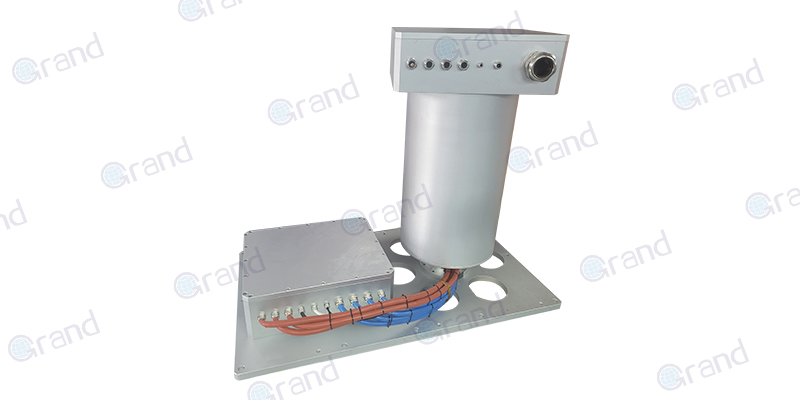Welcome to our comprehensive guide dedicated to the fascinating world of large slip rings. With their critical role in a multitude of applications, these intriguing devices warrant a thorough exploration. Designed to transfer data and electrical power between stationary and rotating parts, large slip rings embody remarkable engineering and technological progress.
In this article, we will delve into a detailed understanding of these devices—unpacking their intricate structure, examining the various types available on the market, identifying their multitudinous applications, and considering the current and emerging trends shaping their evolution. By the end of this guide, you will gain substantial insight into large slip rings and appreciate their indispensable contribution to technological advancements.
Description of a Large Slip Ring
A large slip ring is a mechanical and electrical component specifically designed for transmitting power, data, and electrical signals between a stationary component and a rotating structure. The “large” designation refers to the size and capacity of the slip ring, distinguishing it from smaller, less capable slip rings commonly found in various electric motors and smaller-scale devices. Generally, the term “large” is used when referring to slip rings that have a higher current-carrying capacity or an extensive number of channels, catering to more demanding technical specifications.
Typically, large slip rings consist of a central conductive ring (typically made of copper or other metal alloys) which provides a continuous path for electrical transmission. Carbon brushes glide over the conductive tracks on the rotating part, enabling a consistent, uninterrupted flow of power and data in the applications they serve. These devices are designed to handle high rotational speeds, significantly heavy-duty usage, and harsh environmental conditions.
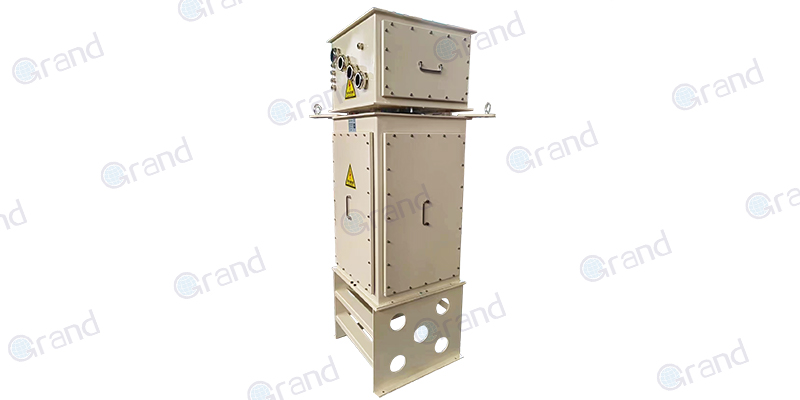
Overview of Large Slip Ring Major Applications and Importance
Large slip rings play an essential role in a wide variety of applications. Their size, design, and power-carrying capabilities make them ideal for use in sectors where heavy-duty equipment is commonly employed or where a stable and reliable connection is required. Some prominent sectors that utilize large slip rings are:
- Wind Turbine Industry: In wind turbines, large slip rings enable the transmission of electrical power and control signals between the nacelle and rotating blades, allowing efficient power generation and control over the turbine’s operation.
- Heavy Machinery: Large slip rings can be found in various pieces of heavy machinery, such as cranes, excavators, and rotating platforms. They ensure seamless power transmission and control signals in these equipment’s rotating components.
- Marine and Offshore Industry: Large vessels, offshore equipment, and robotic submarines require continuous power and signal transmission between stationary and rotating structures. Large slip rings contribute to the operational efficiency of marine navigational systems and undersea exploratory systems.
- Defense and Aerospace: For radar installations, satellite communication dishes, missile launchers, and even spacecraft, large slip rings facilitate the continuous transmission of essential signals. They ensure proper functioning without letting mechanical motion compromise the system’s efficiency.
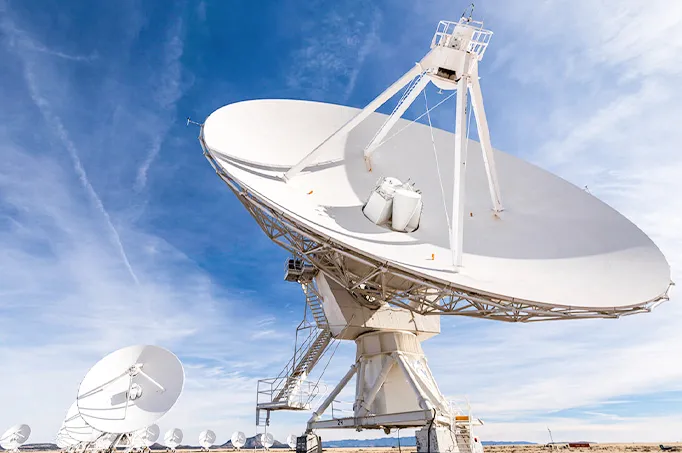
The importance of large slip rings cannot be overstated. They provide a critical link in numerous applications, ensuring effective power and data transmission while maintaining system reliability and operational efficiency.
Large Slip Ring Design and Working Principle
Explanation of Large Slip Ring Design and Dimensions
Large slip rings come with unique designs that cater to the transmission of different types of signals (power, data, optical, or fluid) with variable dimensions depending on their application.
In terms of structure, a large slip ring consists of two core components: the rotor (the rotating part) and the stator (the stationary part). The rotor, usually connected to the rotating structure, contains conductive tracks made from a metal alloy, ensuring efficient transfer of currents or signals. On the other hand, the stator is connected to the stationary structure and makes use of brushes (typically made of graphite or precious metal) that slide on the conductive tracks of the rotor without hindering its rotation.
The dimensions of a large slip ring, such as its outer diameter, inner diameter, length, and number of channels, vary widely. These dimensions are largely determined based on the requirements of the specific application it is to be used for. The overall size often reflects the slip ring’s capability to handle the amount of current or the number of signals to be transferred. The dimensions also take into account the available space in the machinery where the large slip ring is to be integrated.
Discussion on Their Operating Principle
The operating principle of a large slip ring is based on the simple yet effective concept of maintaining unbroken electrical contact between a stationary and a rotating component. As the rotor rotates, the conductive tracks come into contact with the brushes attached to the stator. This allows power and data to flow continuously from the stationary component to the moving part, without hindering the mechanical movement or risking the disconnection of the circuits.
During operation, the brushes slide over the rotating conductive tracks, maintaining an uninterrupted electrical connection, which allows currents or signals to flow through the circuit regardless of the rotor’s movement. This makes it possible for the large slip ring to facilitate the simultaneous transmission of several types of signals, an aspect invaluable in complex systems.
The operation reliability and longevity of a large slip ring design depend on numerous additional factors, including the selection of high-performing, wear-resistant materials for brushes and tracks, maintaining a balance between brush pressure and rotational speed, and adopting specific protective measures for use in challenging environmental conditions.
In summary, the design and operating principles of a large slip ring work together to ensure the device’s capabilities match the demand of its targeted applications, providing continuous power and signal transmission even under heavy-duty usage and harsh environmental conditions.
Types of Large Slip Rings
Description of Various Types of Large Slip Rings
Large slip rings can be broadly categorized into four main types depending on the transmission medium. Each type is uniquely constructed to meet the needs of the specific transmission requirements involved—be it electrical signals, light signals, air, or fluids. The main types of large slip rings include:
- Electrical Slip Rings: These are the most common and widely used slip rings, designed to transfer electrical power and signals between stationary and rotating components. They use brushes made of precious metals or graphite that slide over conductive tracks to establish a connection. Electrical slip rings cater to diverse applications ranging from cranes and wind turbines to radars.
- Optical Slip Rings (Fiber Optic Rotary Joints): Also known as FORJs, these slip rings are specifically designed to transmit optical signals or light-based data between stationary and rotating parts. Instead of brushes and tracks, they use high-precision optics (such as lenses or fibers) to maintain a continuous connection. They are ideal for applications with high data rates, long-distance data transmission, or where electrical noise is a concern.
- Pneumatic Slip Rings (Rotary Unions or Rotary Joints): Designed to transfer gases, such as compressed air, between stationary and rotating structures, pneumatic slip rings use sealing technologies (like mechanical seals) to maintain a gas-tight connection. They are commonly used in pneumatic systems, vacuum applications, or high-pressure reactors that require a rotatory connection for gas transmission.
- Hydraulic Slip Rings (Fluid Rotary Unions): Similar to pneumatic slip rings, these devices transfer fluids between stationary and moving parts. They utilize sealing technologies to provide a leak-proof connection and can convey various types of liquids, such as water, oil, or chemicals. Applications include marine systems, coolant circulation in heavy machinery, and oil drilling equipment.
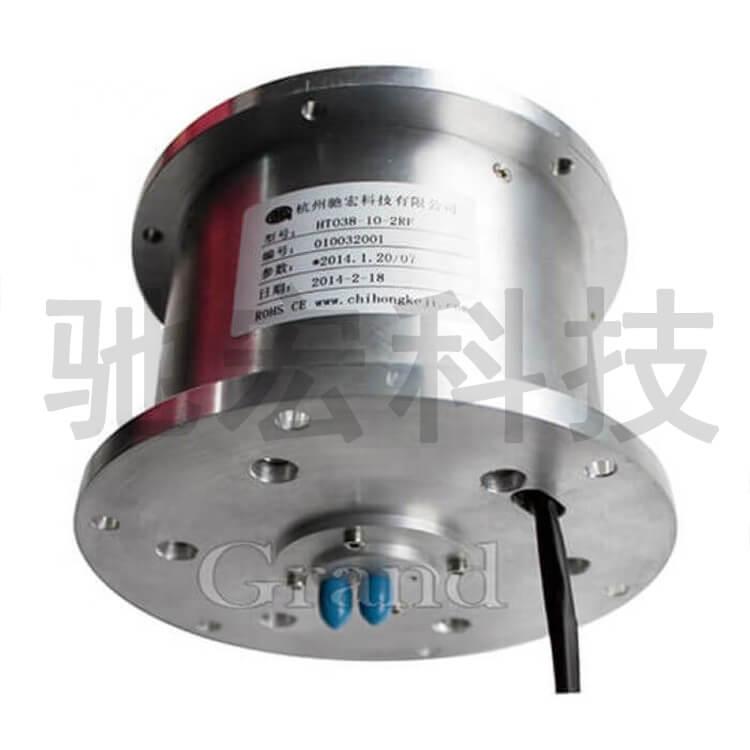
Brief Details about Specifications and Differences
While different types of large slip rings share a fundamental goal—transmitting signals or power between stationary and rotational components—their specifications and differences derive from their construction, materials, and transmission medium.
Here are some key distinctions between large slip ring types:
- Transmission Medium: Electrical slip rings transfer electrical power and signals, optical slip rings deal with light-based signals, pneumatic slip rings involve gas distribution, and hydraulic slip rings manage fluid flow.
- Operating Mechanism: The operational principles differ based on the required transmission medium. Electrical slip rings use brushes and conductive tracks, while optical slip rings rely on optical components like lenses or fiber for transmission. Pneumatic and hydraulic slip rings use sealing technologies in their design to provide a leak-proof connection.
- Application Suitability: Their unique designs make each type ideal for specific applications. Electrical slip rings are suited for general power and signal transmission scenarios, optical slip rings work well in data-intensive and optical communication-related tasks, and pneumatic and hydraulic slip rings are valuable in gas and fluid management systems, respectively.
In conclusion, the various types of large slip rings cater to different industrial sectors based on their unique design, specifications, and intended transmission medium. Each type of large slip ring offers distinct advantages in its appropriate realm, garnering a position of prominence in its respective field of application.
Large Slip Ring Applications in Different Industries
The Role of Large Slip Rings in the Wind Power Industry
In the wind power industry, large slip rings play a pivotal role in enabling efficient and continuous power generation from wind turbines. The turbines’ nature of operation involves rotation of the large blades, which can lead to the winding up of the cables if a rotary transmission solution like slip rings is not used.
Slip rings in this context are used to transmit power and data between the nacelle (wind turbine’s stationary part) and the generator housed in the blades (rotating part) of a wind turbine. They ensure an uninterrupted and constant flow of signals for control and monitoring systems while allowing the power generated to be transferred to the grid, ensuring continuous and optimal operation of the turbine.
Usage in Heavy Machinery Industries
Large slip rings are extensively used in heavy machinery industries. Machines such as tower cranes, excavators, carousel machines, and revolving doors rely on large slip rings for efficient operation. These machines involve components that need to rotate while maintaining electrical connections. The large slip rings used in this context transfer power and control signals from stationary to rotating parts, making it possible to control the equipment while ensuring its smooth operation.
Deployment in Defense and Aerospace
In defense and aerospace applications, continuous and reliable signal transmission is critical. Large slip rings are deployed in systems like radar installations, satellite dishes, missile launchers, and spacecraft. They facilitate the transmission of data and power signals between stationary and rotating parts, ensuring the uninterrupted operation of pivotal systems. For instance, in radar systems, large slip rings enable the antenna to rotate continuously while maintaining the flow of data and power.
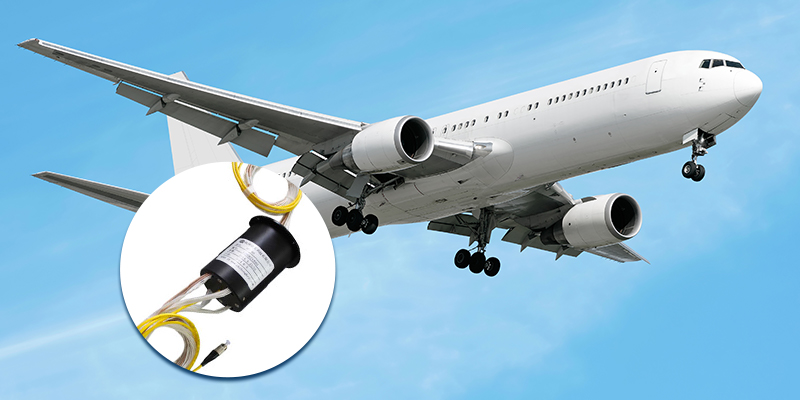
Application in Marine Vessels
Marine technology extensively employs large slip rings, particularly in systems like propellers, navigational lights, and other equipment that require the steady transmission of electrical signals during rotation. Beyond regular marine vessels, large slip rings also find use in undersea exploratory systems, such as remote-operated vehicles (ROVs) and robotic submarines, where they ensure that power and signal connections are maintained despite the constant mechanical motion of these systems.
Other Major Applications
Large slip rings find a wide spectrum of applications in diverse sectors. Some of these include:
- Medical Equipment: In medical imaging devices like CT scanners, slip rings transmit power and data, enabling the scanner’s rotating parts to function while maintaining a continuous connection.
- Entertainment Industry: In rotating stages, lighting systems, and rides in amusement parks, large slip rings contribute to smooth operations by transmitting electrical power and control signals, enabling 360-degree rotation without damaging or tangling the cables.
- Telecommunication: For satellite communication dishes that need to rotate to track satellites, large slip rings become essential components, assisting in the smooth transmission of power and data.
In summary, the applications of large slip rings span across various industries. Their ability to reliably transfer power and signals between stationary and rotating parts makes them integral components in multiple sectors.
Large Slip Ring Key Features and Advantages
Key Construction Features That Determine Performance and Longevity
The performance and lifespan of a large slip ring are governed by several essential construction features:
- Material Quality: The materials used for conductive tracks and brushes are crucial to a slip ring’s efficiency and durability. High-quality conductive and brush materials, such as precious metals or specialized conductive alloys, increase electrical contact quality, reduce noise, and enhance the life span of the slip ring.
- Sealing: For slip rings operating in harsh environments, a protective enclosure or sealing is crucial to shield them from particles, moisture, or corrosive substances. Good sealing can enhance the slip ring’s durability and reliability.
- Design Precision: Precision in the design and manufacturing process is vital for maintaining a steady electrical connection as smooth interaction between brushes and tracks influences the performance and longevity of the slip ring.
- Lubrication: Adequate and suitable lubrication helps reduce wear and tear between the brushes and tracks, extending the lifespan of the slip ring.
- Maintenance Accessibility: Designing slip rings in a manner that allows convenient maintenance, such as brush replacement, can significantly enhance their useful life by allowing timely servicing.
Advantages of Using Large Slip Rings Over Smaller Ones in Certain Applications
The decision to use a large slip ring over a smaller alternative is often dictated by the requirements of the specific application. Large slip rings offer several advantages, including:
- Greater Capacity: Large slip rings usually have more channels and higher current capacity, making them better suited for applications requiring the simultaneous transmission of high power and a large number of signals.
- Higher Tolerance: They can be designed to withstand higher rotational speeds and greater levels of environmental stress, such as temperature variations and mechanical vibrations, making them ideal for heavy-duty applications.
- Scaled Dimensions: Their larger size allows for easier integration into large machinery or structures where space is not a constraint.
- Longer Lifespan: Due to their robust construction and the ability to use larger and more durable components (such as larger brushes), they generally offer a longer lifespan compared to smaller slip rings, given suitable maintenance.
In summary, the features and advantages of large slip rings are tailored to ensure optimal performance and extended lifespan, particularly in heavy-duty or high-capacity applications. However, the appropriate size of the slip ring, be it large or small, should be determined by the demands and constraints of the specific use case.
Large Slip Ring User Concerns and Considerations
Factors to Consider When Selecting a Large Slip Ring
When choosing a large slip ring, users should take into consideration several factors to ensure optimal performance and compatibility with the application:
- Compatibility: Determine how well the slip ring aligns with the system structure and size. Check whether its dimensions, speed, and installation method match the requirements of the host machine or equipment.
- Power and Signal Requirements: Consider whether the slip ring can cope with the electrical power needs and signal types that will be transmitted. For example, optical slip rings would be needed where light signal transmission is required.
- Operational Environment: The slip ring’s resistance to elements — like dust, water, heat, or corrosive substances — is critical if it has to operate in a harsh environment.
- Lifespan and Maintenance: Ascertain the expected lifespan of the slip ring and how often it needs maintenance. Having a high-duty cycle, low maintenance, and longer-lasting slip ring will lower the overall operational cost.
Understanding Key Customer Pain Points
Understanding the customer’s pain points is pivotal to offering a suitable slip ring solution:
- Wear and Tear: Continuous rubbing between the brushes and the rotating surface might lead to wear and tear, causing frequent breakdowns, and hence requiring regular replacements.
- Maintenance: The need for regular maintenance, lubrication, or component replacement can increase the total cost of operation.
- Ease of Installation: Complex installation processes can cause operational disruption and increase downtime, which could affect productivity.
- Cost: The initial expenditure on high-quality slip rings and subsequent costs for replacement parts or maintenance services may be substantial.
Insights on How to Ensure Maximum Operational Efficiency and Longevity
To maximize the operational efficiency and longevity of large slip rings:
- Proper Installation: Ensure that the slip ring is installed correctly as per the manufacturer’s guide. Incorrect installation can lead to operational problems and premature failures.
- Regular Maintenance: Conduct periodic inspections and regular maintenance to detect and rectify potential issues early, thereby prolonging the life of the slip ring.
- Opting for High-Quality Products: Invest in high-quality slip rings with a proven track record of reliability, durability, and long operational life.
- Use within Parameters: Overloading or pushing the slip ring beyond its specified limits can lead to early failure. Therefore, operation within the defined parameters is advised.
To conclude, carefully assessing the application needs, understanding customer pain points, and following operational guidelines can help users select the best large slip rings that ensure high operational efficiency and longevity.
Large Slip Ring Future Market Trends
Anticipated Advancements in Design and Technology
The global ecosystem of slip ring technology embraces continuous innovation and improvements. In the future, we can expect to see significant advancements in the design and technology of large slip rings:
- Advanced Materials: With ongoing research and development, new conductive materials are expected to be introduced, which will greatly enhance the overall performance, durability, and reliability of large slip rings.
- Increased Integration: As systems become more complex, large slip rings will likely be designed with greater integration capabilities to handle an extensive range of signals and power connections in a single unit.
- Smart and Automated Maintenance: Embedded sensors and IoT technologies may be incorporated into slip rings to enable condition monitoring and predictive maintenance, reducing downtime and operational costs.
- Green Technology: With a growing emphasis on sustainability in industries, we can anticipate the introduction of environmentally friendly large slip rings that cause less pollution during their lifespan.
Predicted Market Trends and Growth Areas for Large Slip Rings
In line with technological advancements and changing industrial requirements, several market trends and growth areas for large slip rings can be anticipated:
- Growth in the Renewable Energy Sector: With the extensive use of large slip rings in wind turbines to transmit power and signals, the growing global emphasis on renewable energy sources is expected to drastically increase the demand for these slip rings.
- Increased Demand in Robotics and Automation: As robotics and automation technologies advance, the need for large slip rings that can handle complex signals and power transfers will rise, driving growth in this sector.
- Defense and Aerospace Industries: The demand for large slip rings will likely surge in defense and aerospace industries for use in radar systems, satellite communication, and other advanced equipment.
- Expansion in Developing Economies: As industrialization accelerates in developing economies, increased demand for heavy-duty machinery will likely spur the growth of large slip ring markets in these regions.
The future market trends and anticipated advancements for large slip rings are firmly rooted in technology progression and industry evolution. Advancements in related technologies and the growth of sectors that heavily rely on slip rings like renewable energy, robotics, and automation are expected to ramp up the demand and sophistication of these vital components.
Conclusion
The significant role of large slip rings in various industrial applications is irrefutable. As a prospective purchaser or a user, understanding their design uses, and upkeep considerations is crucial. With technological advancements on the horizon, we can expect even more versatile and efficient large slip rings.
FAQs about Large Slip Ring
Below is a list of frequently asked questions from users regarding large slip rings:
Q: What is the difference between a large slip ring and a small slip ring?
A: The main difference between large and small slip rings lies in their size, capacity, and operational capability. Large slip rings usually have more channels, higher current capacity, and can handle more rigorous conditions compared to their smaller counterparts.
Q: How do I determine the appropriate slip ring size for my application?
A: To determine the suitable slip ring size, consider factors such as the physical dimensions of your equipment, the number of signals to be transmitted, power requirements, operational environment, and expected lifespan. It is crucial to select the slip ring based on your specific application needs.
Q: How often does a large slip ring require maintenance?
A: Maintenance frequency depends on the type, application, and operational conditions of the slip ring. Regular inspection should be part of routine maintenance, and the manufacturer’s guidelines can be used to determine the appropriate maintenance intervals.
Q: Can a large slip ring be used in harsh environments?
A: Yes, depending on the specific slip ring design and construction. Slip rings built for harsh environments typically have protective sealing and robust materials, making them resistant to elements like dust, water, heat, or corrosive substances.
Q: Do large slip rings experience more signal noise?
A: Signal noise depends on factors like the type of signals transmitted, the design of the slip ring, and the material quality used for brushes and conductive tracks. High-quality slip rings that use precious metals or specialized conductive alloys can maintain low signal noise even in larger configurations.
Q: Can large slip rings handle higher rotational speeds?
A: Large slip rings can be designed to handle high rotational speeds, but the actual capability depends on the design and construction materials. Consult the manufacturer’s specifications to determine the speed limits for your selected slip ring.
Q: How can I ensure maximum longevity for my large slip ring?
A: To ensure maximum longevity, install the slip ring correctly, follow the manufacturer’s operational guidelines, conduct regular maintenance, and use the slip ring within the specified parameters.
See What We Can Do

